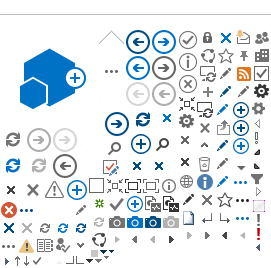ITU-T Study Group 17 - Security
This page refers to a previous study period. For its most recent version, please see
here.
Work on information and communication technology (ICT) security continues to intensify in a bid to facilitate more secure network infrastructure, services and applications. Over seventy standards (ITU-T Recommendations) focusing on security have been published.
Within ITU-T, Study Group 17 coordinates security-related work across all study groups.
One key reference for security standards in use today is the ITU-T Recommendation X.509 for electronic authentication over public networks. X.509, a cornerstone for designing applications relating to public key infrastructure (PKI), is used in a wide range of applications; from securing the connection between a browser and a server on the web, to providing digital signatures that enable e-commerce transactions to be conducted with the same confidence as in a traditional system. Without wide acceptance of the standard, the rise of e-business would have been impossible.
Often working in cooperation with external SDOs and various ICT industry consortia, the study group deals with a broad range of standardization issues. To give only a few examples, SG 17 is currently working on cybersecurity, anti-spam, identity management, telebiometrics and IPTV security.
Cybersecurity remains high on SG 17’s agenda and much work is being conducted on the exchange of cybersecurity information (CYBEX). Additionally, SG 17 is coordinating standardization work covering e-health, cloud computing and SmartGrid security, open identity trust framework, Near Field Communication (NFC) security, and Child Online Protection.
Work highlights
Development of the X.1500 CYBEX ensemble of techniques is a significant step towards enhancing cybersecurity globally. It provides a suite of techniques to facilitate the global information exchange demanded by Computer Incident Response Teams (CIRTs), and is a comprehensive collection of around forty draft ITU-T Recommendations.
Another achievement of SG17's is Recommendation ITU-T X.805, which will give telecom network operators and enterprises the ability to provide an end-to-end architecture description from a security perspective. Key players from telecom network operators, manufacturers and governments have defined the specifications that will alter the way companies look at their networks. The Recommendation will allow operators to pinpoint all vulnerable points in a network and mitigate them.
SG 17 is also the place to study technical languages and description techniques. An example is the formal language Abstract Syntax Notation One (ASN.1), an important component for protocol specification or systems design. ASN.1 is an extremely important part of today's networks. ASN.1 is used, for example, in the signalling system (SS7) for most telephone calls, package tracking, credit card verification and digital certificates, and in many of the most used software programs. Today's work is progressing towards the development of unified modeling language profiles (UML) for ITU-T languages.
Study Group 17 Flyers:
ASN.1Object Identifiers and their Registration authorities (OID)Security